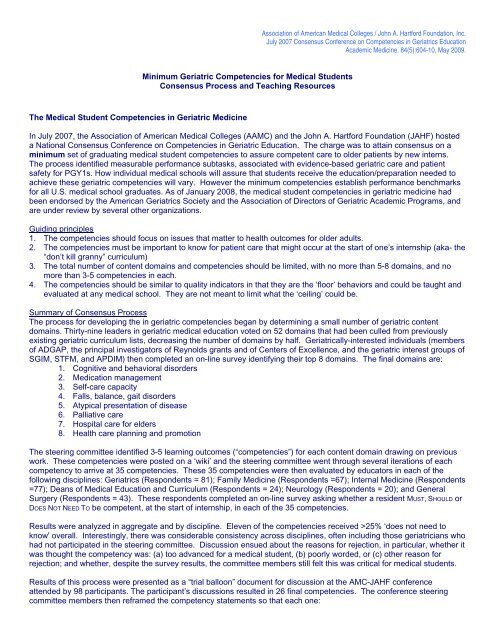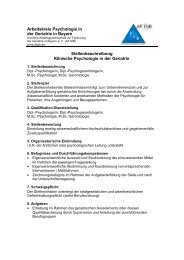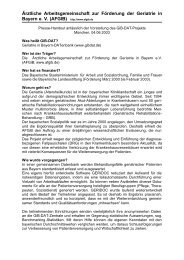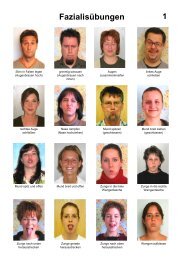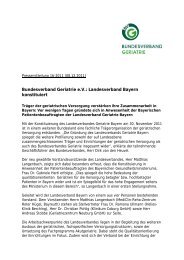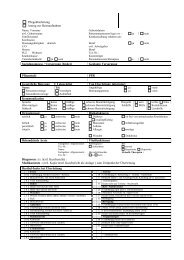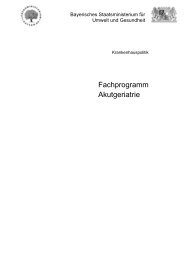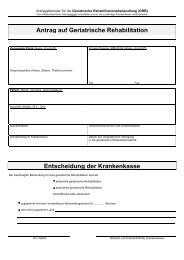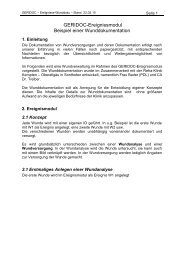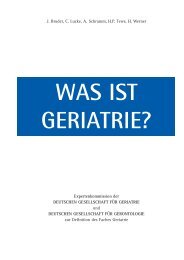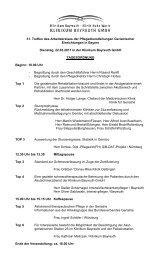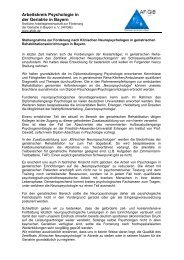MINIMUM GERIATRIC COMPETENCIES for Medical ... - POGOe
MINIMUM GERIATRIC COMPETENCIES for Medical ... - POGOe
MINIMUM GERIATRIC COMPETENCIES for Medical ... - POGOe
- No tags were found...
Create successful ePaper yourself
Turn your PDF publications into a flip-book with our unique Google optimized e-Paper software.
Association of American <strong>Medical</strong> Colleges / John A. Hart<strong>for</strong>d Foundation, Inc.July 2007 Consensus Conference on Competencies in Geriatrics EducationAcademic Medicine. 84(5):604-10, May 2009.Minimum Geriatric Competencies <strong>for</strong> <strong>Medical</strong> StudentsConsensus Process and Teaching ResourcesThe <strong>Medical</strong> Student Competencies in Geriatric MedicineIn July 2007, the Association of American <strong>Medical</strong> Colleges (AAMC) and the John A. Hart<strong>for</strong>d Foundation (JAHF) hosteda National Consensus Conference on Competencies in Geriatric Education. The charge was to attain consensus on aminimum set of graduating medical student competencies to assure competent care to older patients by new interns.The process identified measurable per<strong>for</strong>mance subtasks, associated with evidence-based geriatric care and patientsafety <strong>for</strong> PGY1s. How individual medical schools will assure that students receive the education/preparation needed toachieve these geriatric competencies will vary. However the minimum competencies establish per<strong>for</strong>mance benchmarks<strong>for</strong> all U.S. medical school graduates. As of January 2008, the medical student competencies in geriatric medicine hadbeen endorsed by the American Geriatrics Society and the Association of Directors of Geriatric Academic Programs, andare under review by several other organizations.Guiding principles1. The competencies should focus on issues that matter to health outcomes <strong>for</strong> older adults.2. The competencies must be important to know <strong>for</strong> patient care that might occur at the start of one’s internship (aka- the“don’t kill granny” curriculum)3. The total number of content domains and competencies should be limited, with no more than 5-8 domains, and nomore than 3-5 competencies in each.4. The competencies should be similar to quality indicators in that they are the ‘floor’ behaviors and could be taught andevaluated at any medical school. They are not meant to limit what the ‘ceiling’ could be.Summary of Consensus ProcessThe process <strong>for</strong> developing the in geriatric competencies began by determining a small number of geriatric contentdomains. Thirty-nine leaders in geriatric medical education voted on 52 domains that had been culled from previouslyexisting geriatric curriculum lists, decreasing the number of domains by half. Geriatrically-interested individuals (membersof ADGAP, the principal investigators of Reynolds grants and of Centers of Excellence, and the geriatric interest groups ofSGIM, STFM, and APDIM) then completed an on-line survey identifying their top 8 domains. The final domains are:1. Cognitive and behavioral disorders2. Medication management3. Self-care capacity4. Falls, balance, gait disorders5. Atypical presentation of disease6. Palliative care7. Hospital care <strong>for</strong> elders8. Health care planning and promotionThe steering committee identified 3-5 learning outcomes (“competencies”) <strong>for</strong> each content domain drawing on previouswork. These competencies were posted on a ‘wiki’ and the steering committee went through several iterations of eachcompetency to arrive at 35 competencies. These 35 competencies were then evaluated by educators in each of thefollowing disciplines: Geriatrics (Respondents = 81); Family Medicine (Respondents =67); Internal Medicine (Respondents=77); Deans of <strong>Medical</strong> Education and Curriculum (Respondents = 24); Neurology (Respondents = 20); and GeneralSurgery (Respondents = 43). These respondents completed an on-line survey asking whether a resident MUST, SHOULD orDOES NOT NEED TO be competent, at the start of internship, in each of the 35 competencies.Results were analyzed in aggregate and by discipline. Eleven of the competencies received >25% ‘does not need toknow' overall. Interestingly, there was considerable consistency across disciplines, often including those geriatricians whohad not participated in the steering committee. Discussion ensued about the reasons <strong>for</strong> rejection, in particular, whether itwas thought the competency was: (a) too advanced <strong>for</strong> a medical student, (b) poorly worded, or (c) other reason <strong>for</strong>rejection; and whether, despite the survey results, the committee members still felt this was critical <strong>for</strong> medical students.Results of this process were presented as a “trial balloon” document <strong>for</strong> discussion at the AMC-JAHF conferenceattended by 98 participants. The participant’s discussions resulted in 26 final competencies. The conference steeringcommittee members then reframed the competency statements so that each one:


